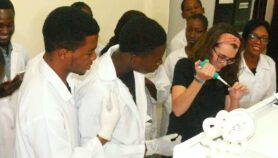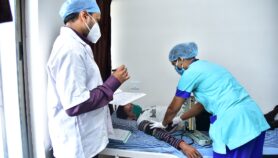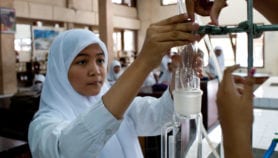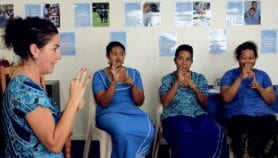By: T.V. Padma
Send to a friend
The details you provide on this page will not be used to send unsolicited email, and will not be sold to a 3rd party. See privacy policy.
[NEW DEHLI] India has a high incidence of extensively drug-resistant tuberculosis that is virtually untreatable, according to new research.
The results were announced at a session of the American Thoracic Society 2007 International Conference in San Francisco, yesterday (21 May).
The research, from the P. D. Hinduja National Hospital and Medical Research Centre in Mumbai, shows that extensively drug-resistant tuberculosis (XDR-TB) accounts for eight per cent of all multi-drug resistant tuberculosis (MDR-TB) cases in India.
The incidence of XDR-TB in the United States is about four per cent of all MDR-TB cases, says researcher Sushil Jain.
Jain and colleagues found that of 1,274 samples from patients infected with Mycobacterium tuberculosis, 32 per cent were MDR-TB and of these eight per cent were XDR-TB. The study was conducted at the hospital in 2005.
Forty-two per cent of the XDR-TB patients died, a rate that Jain describes as "alarmingly high".
MDR-TB are strains of tuberculosis resistant to at least the two first-line tuberculosis drugs, while XDR-TB is resistant to an additional three of the six classes of second-line therapies.
MDR-TB is difficult to treat and cure, says Jai Narain, director of communicable diseases at the World Health Organization (WHO) in Delhi.
It needs over two years of treatment ― compared with six months for normal tuberculosis ― and is 200 times costlier to cure than ordinary tuberculosis.
"XDR-TB is even more difficult to treat successfully, as there are very few drugs left to which the organism is still sensitive. Due to this, XDR-TB is often referred to as a virtually untreatable form of tuberculosis," says Narain.
WHO officials caution that a true picture of the extent of MDR- and XDR-TB in India will emerge only after results of an Indian government survey ― conducted in the western states of Gujarat and Maharashtra in 2005 ― are analysed.
The WHO is currently working with the Indian government to enhance the capacity of Indian laboratories to test the susceptibility of tuberculosis strains to second-line drugs.
Currently, the Tuberculosis Research Centre in Chennai is the only national laboratory recognised by the WHO as having the capacity to detect resistance to second-line therapies.
More on Capacity building

Script media release
Journalists offered ‘big break’ mentoring opportunity from Radio Nigeria
03/04/19












